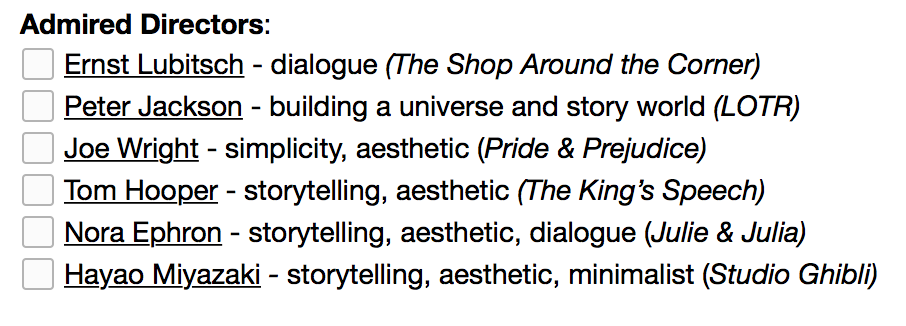Roman Polanski said,
“…we had no design or definite idea what we would be writing about. It wasn’t, “Hey, I have an idea so let’s write a screenplay.” It was, “Let’s write what we’d like to see on the screen – the kind of emotions, the kind of feelings, the kind of characters, atmosphere we’d like to see in a film.””
After much discussion with my yoghurt-eating self and eventually having the courage to also share my ideas to my tutor last week, I have finally come to the conclusion that “courage is not the absence of fear, but the judgment that something else is greater than fear” and in my instance, this “something” is my love for this certain set of books that has me in blissful creative raptures.
Before I go on a bit of a spiel on the huge adaptation talk (a nasty kind of conference meeting, really) I will instead be informing you all of the certain set of actions, locations and nasty real-life people who have inspired my creative machinations.
Actions
- A man resting his forearms on his knees, head bent between them – the raw, masculine image of it
- The ethereal movement of a young woman
- How some people carry themselves in an almost otherwordly dignified and graceful manner
- Someone leaning on a balustrade overlooking a crowd of people and they uncannily spot a person they know amidst the throng and pandemonium
- The way a person would clasp their hands anxiously whilst sitting down
- The uncanny way a person notices another without directly looking at them
Location
- A big lake outlined by old houses
- Grand houses – villas
- Old Elizabethan-type roads – unpaved Cobblestone houses, buildings, roads
- An antique bookshop
- Old bookstores, libraries
- A house in Manly – a red entrance door beside two grey buildings, musky scented carpet nailed on the stairs, muffling the sounds of your footsteps.
List of actions (as vague as one can be)
- A young woman- gracefulness, dignified manner of walk
- Man – built, posture
- Man- the way he slicks his hair back all the time and the way the clothes he wears simply sits on him and he carries the grace of an actor with a mission
- A young woman – ethereal presence, almost aloof but very wise
If I were to be frank, most of the actions listed above are motivated by my need to see them in real life. They are drawn from said favourite set of books, but these subtle movements are what makes the books stand out for me, propelling me to find conclusive evidence through the myriad variations of the human actions of everyday.
This list isn’t exhaustive but these certain actions have in much influence in the final project that I have in mind. I want to explore emotions, characters, sentiments, the human condition portrayed and valued in its vulnerability. Some questions that pop in my head in regards to turning these into a project are:
- How am I to capture this? What’s the best way to do so?
- I could write a short 3-page script inspired by said characters. Or I could also just focus on one character and two max. three locations.
- What kind of shots would best portray a character’s emotion?
- Research on dramatic movies would help in highlighting which shots can be used.




